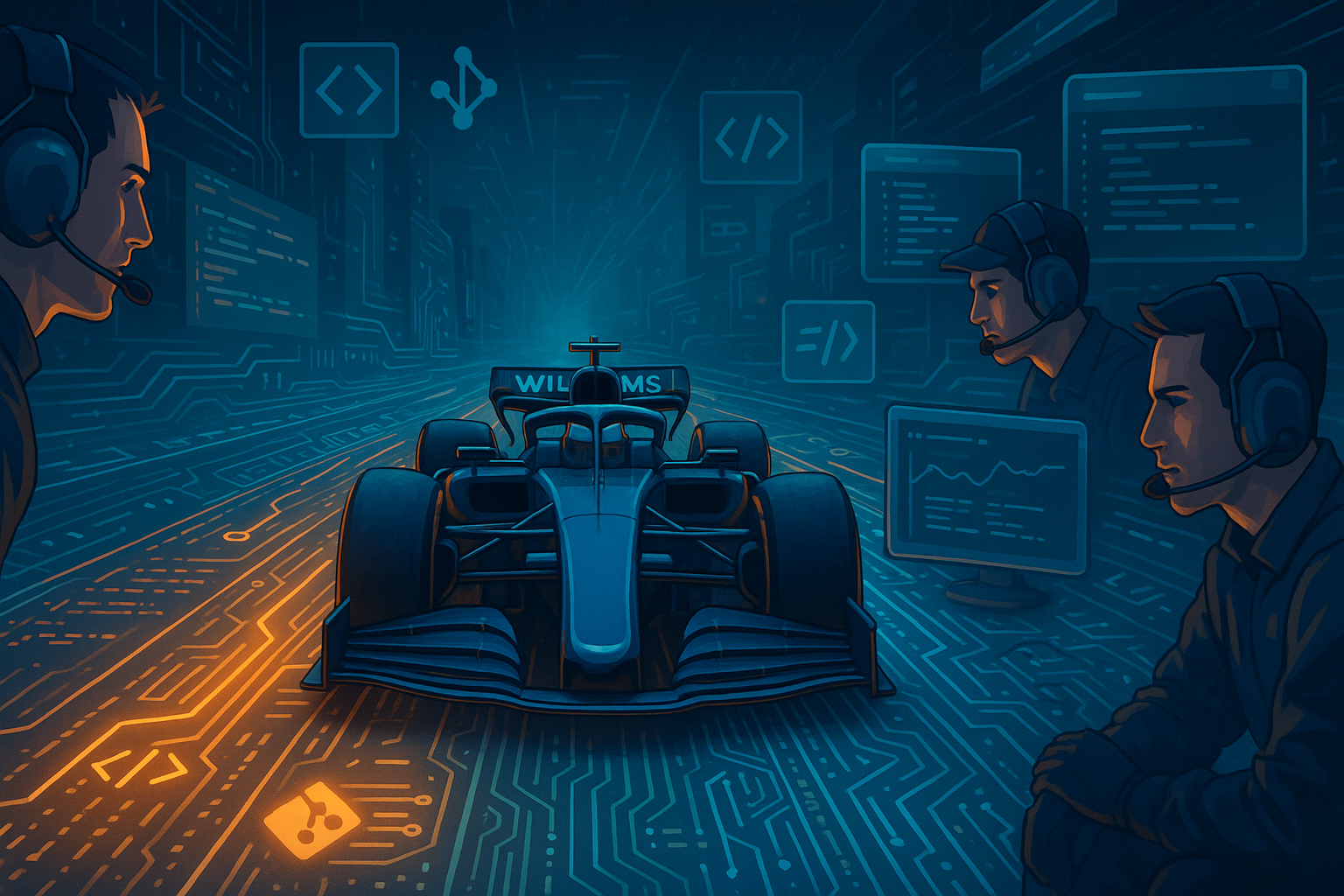How F1 Thinking Can Improve Your Software Development
With the Silverstone Grand Prix this weekend, I've been thinking about how Formula 1 and software development share more in common than you might expect. As someone who's spent just as much time debugging production issues as watching Verstappen defend into Copse, I've started to notice some patterns-especially around how elite performance is built and sustained over time.

This isn't a direct metaphor-your dev team isn't changing tyres in two seconds or hitting apexes at 300km/h-but the mindset behind a high-performing F1 team offers useful lessons for building and shipping software that lasts.
Thinking Beyond the Next Race: Building for the Season
In F1, success isn't about a single win, it's about delivering consistently across an entire championship. Similarly, in software, the best teams don't just optimise for short-term feature velocity. They build systems that are resilient, maintainable, and scalable over the long term.
A great current example of this mindset is James Vowles, Team Principal at Williams Racing. He's taken on the challenge of turning around one of the most historic teams in motorsport-not by chasing flashy results, but by systematically improving the underlying culture, technology, and operational structure. He's focused on getting the fundamentals right: data systems, leadership structure, internal tooling-things that don't win races overnight, but that are crucial for sustained success.
That philosophy applies directly to software teams. The best ones aren't necessarily the fastest out of the gate-they're the ones that build a foundation to scale, iterate, and adapt.
- Refactor regularly rather than relying on huge rewrites
- Invest in dev tooling and CI/CD pipelines
- Prioritise team health and onboarding, not just deadlines
- Choose stable frameworks (like Laravel) with predictable release cycles
- Build processes that survive scale and team changes
Clean Pit Stops: Tight, Predictable Deployments
A well-drilled F1 pit crew isn't just fast-they're predictable. Everyone knows their role, the process is rehearsed, and fallback plans are in place. You want that same confidence in your deployment pipeline.
You're not aiming for a sub-three-second deploy-but you are aiming for something that:
- Has a clear checklist
- Can be repeated with minimal variation
- Surfaces issues early
- Has a clear rollback path
- Involves the right people at the right time
Data That Drives Action
F1 teams run on data-but more importantly, on useful data. They don't just collect telemetry for the sake of it; they use it to make decisions between sessions, on strategy, and even mid-race.
In software, we often set up logging and observability tooling, but don't always take the time to refine it. What metrics actually matter?
| Metric | Why It Matters |
|---|---|
| Request response time | Directly impacts user experience |
| Error rate (especially 5xx) | Reflects system stability |
| Deployment failure rate | Indicates quality of release processes |
| Slow DB queries | Common root cause of performance issues |
| Background job queue time | Affects async UX like emails, notifications, etc. |
Handling Incidents Like a Safety Car
In F1, when things go wrong, a safety car or red flag forces teams to adjust quickly. Some use it as a chance to regroup or pivot strategies. In software, production incidents serve a similar role: they test how well your team communicates and responds under pressure.
- Assign an incident commander who leads resolution
- Use a dedicated channel for communication
- Have clear escalation paths and rollback criteria
- Do a post-incident review focused on process, not blame
Handled well, an incident becomes an accelerant for improvement, not just disruption.
Communication Under Pressure
During an F1 race, you'll hear engineers communicate with intense clarity-no waffle, no delay, just relevant information at the right time. The goal isn't brevity; it's utility.
We should aim for the same, especially during deployments or incidents:
- Establish pre-defined roles for who communicates what
- Use tools like Laravel's Notification system or Slack bots to automate alerts
- Create visibility dashboards instead of chasing updates
- Appoint someone to act as "race engineer"-bridging the business and technical side
Strong communication isn't just a nice-to-have-it's critical infrastructure.
Marginal Gains: Continuous Delivery Over Big Bangs
Championships are rarely won by a single bold move. They're won by stacking small improvements, week after week. That's the heart of the "marginal gains" philosophy you see in top-tier engineering cultures-and in F1 paddocks too.
For software teams, that might look like:
- Upgrading Laravel versions incrementally
- Optimising queries one controller at a time
- Refactoring tests during code reviews
- Improving onboarding docs after every new hire
- Reducing friction in the CI/CD pipeline with each sprint
These 1% improvements compound. They don't slow you down-they're what keep you in the race.
Final Thoughts: The Championship Mentality
Whether you're tuning an F1 car for Silverstone or deploying a Laravel app, the mindset that delivers results is the same:
- Play the long game
- Build strong foundations
- Learn from failure
- Prioritise clarity
- Never stop improving
James Vowles didn't walk into Williams expecting instant results. He's focused on culture, infrastructure, and sustainable progress. That's the exact mindset any engineering leader should embrace.
So as the F1 circus rolls into Silverstone this weekend, it's worth reflecting on how those principles play out in your own team. Are you building just for the next sprint-or for the next season?
Because in software, as in racing, the difference between finishing and winning often comes down to the systems you build behind the scenes.
